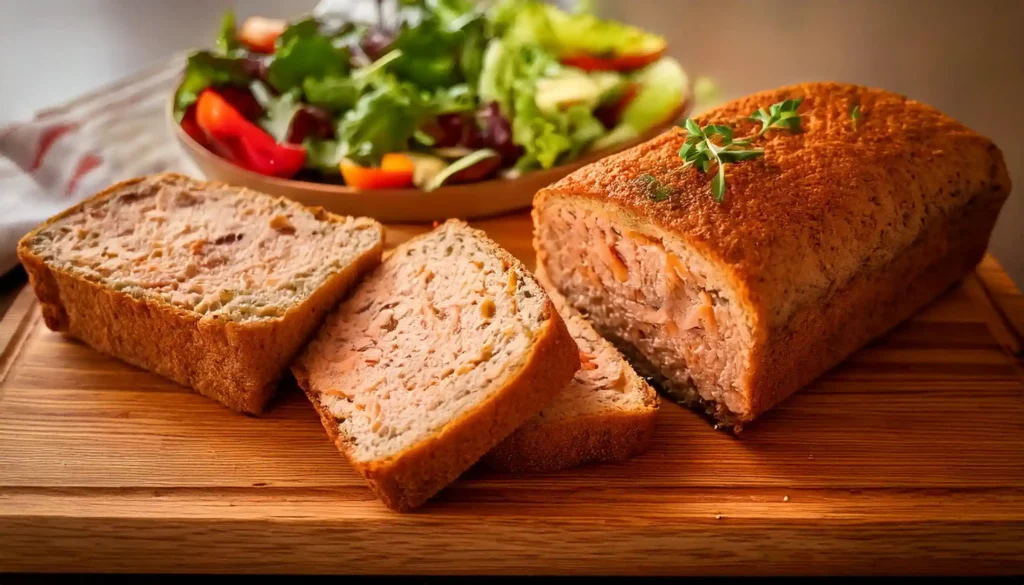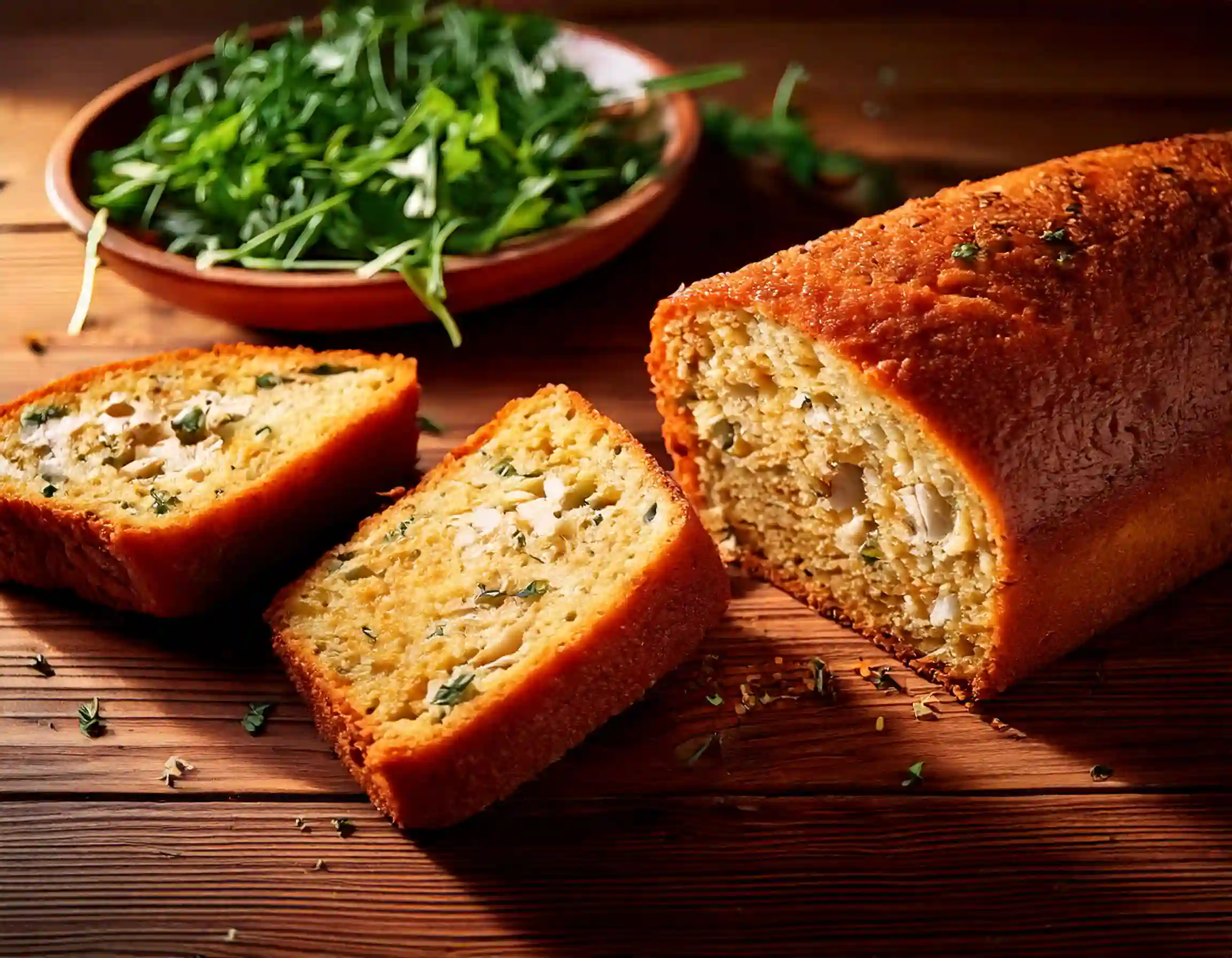salmon loaf vs tuna loaf: Both salmon loaf and tuna loaf, therefore, offer tasty, affordable meal options. Indeed, they are great for a quick lunch or a light dinner. In this article, we will compare these two dishes, highlighting their nutritional values and taste. Additionally, we will guide you through their cooking process, too.
Salmon Loaf Versus Tuna Loaf: Understanding the Basics
Salmon loaf and tuna loaf are both baked dishes. They combine fish with other ingredients. These loaves are easy to make and very adaptable. However, they differ quite a bit in taste and nutritional profile. Salmon, for instance, has a rich flavor and healthy fats. Tuna, on the other hand, has a milder flavor and more protein.
Ingredients Used in Each Type
The base of both salmon loaf and tuna loaf is, of course, their respective fish. Canned salmon usually includes skin and bones. This adds calcium and extra nutrients. Canned tuna, in contrast, is typically boneless and skinless. Beyond the fish, other common ingredients are bread crumbs, eggs, and seasonings. Some recipes include vegetables such as onions and celery.
Texture and Flavor Profiles
Salmon loaf often has a moist, flaky texture. Its flavor is distinctively salmon-like, with a slightly oily taste. Conversely, tuna loaf has a more dense and firm texture. The taste is milder than salmon, making it a good base for stronger seasonings. Therefore, taste preferences play a big role in which loaf you will enjoy more.
Nutritional Benefits of Salmon Loaf
Salmon is known for its nutritional advantages. It’s rich in Omega-3 fatty acids. These fats are good for heart health. Salmon also contains vitamins like D and B12. Therefore, a salmon loaf can offer these benefits. Furthermore, canned salmon with bones provides a good source of calcium.
Key Nutrients Found in Salmon
Salmon is a nutrient-dense food. It contains protein, vitamins, and minerals. Specifically, it has selenium, which acts as an antioxidant. These nutrients help keep your body working well. Therefore, salmon is a great option for a balanced diet.
Caloric and Fat Content in Salmon Loaf
A serving of salmon loaf can vary in calories and fat. However, it generally provides healthy fats from the salmon. The added ingredients like eggs and bread crumbs add to the calorie count. Therefore, it is good to look at each recipe’s specific details. Keep in mind portion sizes to manage your calorie intake.
Nutritional Benefits of Tuna Loaf
Tuna, similar to salmon, offers significant nutritional benefits. It is a very good source of protein. Tuna is also low in fat compared to salmon. Consequently, tuna loaf is often a leaner option. Additionally, it contains essential vitamins and minerals.
Key Nutrients Found in Tuna
Tuna provides nutrients like vitamin D and B12. Moreover, it’s a good source of selenium. It also contains Omega-3 fatty acids, although less than salmon. Thus, tuna helps in building and repairing body tissue.
Caloric and Fat Content in Tuna Loaf
Tuna loaf is typically lower in fat than salmon loaf. Therefore, it might be preferred by those limiting fat intake. The calorie count depends on the recipe’s ingredients. However, it’s generally a lighter dish. Always check the nutrition label for exact numbers.
Taste and Flavor Profiles: Salmon Loaf vs. Tuna Loaf
The most notable difference between salmon loaf and tuna loaf is taste. Salmon loaf has a stronger, more rich flavor. This is due to the natural taste of salmon. Tuna loaf, however, tends to be milder. Therefore, the seasoning becomes more important in tuna loaf.
Comparing the Palatability of Each
Many find the rich taste of salmon very satisfying. Consequently, salmon loaf often requires less seasoning. Tuna loaf, due to its mildness, is very compatible with a wider range of flavors. Accordingly, you can add different herbs and spices to create different tastes.
Which is More Versatile for Seasoning?
Tuna loaf is more versatile when it comes to seasoning. Its mild taste compliments many varieties of seasoning. You can add dill, lemon, or even a dash of hot sauce. However, salmon loaf can also benefit from different flavors, though its taste is more pronounced. Therefore, your taste preferences will guide your choice of loaf.
Preparation and Cooking: Making Each Loaf
Both salmon loaf and tuna loaf follow similar cooking methods. They usually require combining ingredients, forming a loaf, and baking. The preparation is straightforward. Accordingly, even beginner cooks can easily make these loaves.
Step-by-Step Guide for Salmon Loaf
To prepare a salmon loaf, mix canned salmon with bread crumbs, eggs, and seasonings. Afterward, shape it into a loaf and bake until golden. The baking time varies depending on the recipe. Therefore, following your recipe’s instructions is very important.
Step-by-Step Guide for Tuna Loaf

Tuna loaf also involves mixing canned tuna with bread crumbs, eggs, and seasonings. Similarly, shape it into a loaf and bake. Some recipes suggest adding finely chopped vegetables like onion or celery. Hence, feel free to adapt recipes to your liking.
Recipe for a Basic Salmon Loaf
This recipe is simple, easy and can be prepared with simple ingredients that most people have at home.
Ingredients:
- 1 (14.75 ounce) can salmon, drained (with bones and skin)
- 1/2 cup bread crumbs
- 1/4 cup milk
- 1 large egg, lightly beaten
- 2 tablespoons onion, finely chopped
- 1 tablespoon lemon juice
- 1/2 teaspoon dried dill
- 1/4 teaspoon black pepper
- Pinch of salt
- 1 tablespoon butter, melted (for greasing)
Instructions:
- Preheat your oven to 350°F (175°C). First, grease a loaf pan with the melted butter.
- In a large bowl, gently flake the drained salmon. Next, add bread crumbs and milk. Allow to soak for 2 minutes.
- Add the beaten egg, chopped onion, lemon juice, dried dill, salt and pepper to the mixture. Then, mix all the ingredients until well combined.
- Pour the mixture into the prepared loaf pan. Afterward, gently press the mixture into an even layer.
- Bake for 30 to 35 minutes, or until the loaf is golden brown and firm. A toothpick inserted into the center should come out clean.
- Remove from the oven. Let it cool for a few minutes before removing it from the pan.
- Slice the salmon loaf and serve. Enjoy it warm, with a side salad, or crackers.
Recipe Notes
Feel free to add other vegetables, such as finely diced celery or red peppers to the loaf. For extra flavor, try adding a tablespoon of chopped capers. If you want a smoother texture, remove the salmon skin and bones. Remember, every person has different preferences, therefore, you can adjust seasoning to fit your taste.
Recipe for a Basic Tuna Loaf
This recipe is simple, easy and can be prepared with simple ingredients that most people have at home.
Ingredients:
- 2 (5 ounce) cans tuna, drained
- 1/2 cup bread crumbs
- 1/4 cup milk
- 1 large egg, lightly beaten
- 2 tablespoons onion, finely chopped
- 1 tablespoon of mayonnaise
- 1/4 teaspoon garlic powder
- 1/4 teaspoon black pepper
- Pinch of salt
- 1 tablespoon butter, melted (for greasing)
Instructions:
- Preheat your oven to 350°F (175°C). Grease a loaf pan using the melted butter.
- In a large bowl, combine the drained tuna, bread crumbs, and milk. Let it soak for 2 minutes.
- Add the beaten egg, chopped onion, mayonnaise, garlic powder, salt, and pepper to the mixture. Mix all ingredients well.
- Pour the mixture into the greased loaf pan. Then, gently press it into an even layer.
- Bake for 25 to 30 minutes. The loaf should be golden brown. Also, a toothpick inserted in the center should come out clean.
- Remove from the oven. Let it cool for a few minutes before removing it from the pan.
- Slice the tuna loaf and serve. Serve with your favorite side dish, like a salad.
Recipe Notes
For an extra flavor, add a tablespoon of sprinkled lemon juice or chopped pickles. For different textures, try using different types of bread crumbs. Feel free to experiment with various seasonings. Therefore, always taste as you cook to find your ideal taste.
Nutritional Comparison: Salmon Loaf vs Tuna Loaf
Salmon loaf and tuna loaf have different nutritional profiles. Salmon loaf tends to have more Omega-3 fats. However, tuna loaf is often lower in fat and higher in protein. Both are great choices, but the best one depends on your nutritional requirements.
Detailed Nutritional Content
Here is a table comparing the approximate nutritional content of salmon loaf and tuna loaf. Keep in mind that these numbers can change depending on specific ingredients and portion sizes.
| Nutrient | Salmon Loaf (per 100g) | Tuna Loaf (per 100g) |
| Calories | 180-220 | 140-180 |
| Protein | 15-18g | 18-22g |
| Total Fat | 10-14g | 5-9g |
| Saturated Fat | 2-3g | 1-2g |
| Omega-3 | 1-2g | 0.3-0.6g |
| Calcium | 80-120mg | 10-20mg |
| Selenium | 30-40mcg | 40-50mcg |
Which Loaf is Better for Specific Dietary Needs?

If you want healthy fats and calcium, salmon loaf is a good option. However, if you need a high protein, low-fat option, tuna loaf might be a better fit. Therefore, consider your nutritional goals when choosing between these two loaves. Furthermore, always consult with a nutrition expert.
Serving Suggestions: How to Enjoy Each Loaf
Salmon loaf and tuna loaf are very adaptable. They can be served in many ways. Each loaf can be part of a light meal or a main course. Therefore, the options are endless.
Side Dishes That Complement Each
Salmon loaf pairs well with refreshing salads, steamed vegetables, or whole grain crackers. Tuna loaf goes well with tomatoes, cucumber, or hard-boiled eggs. Accordingly, choose side dishes that match your taste preferences.
Meal Ideas: Incorporating the Loaf
You can have these loaves for lunch or light dinner. They also make great snacks. You can serve them hot or cold. Thus, they are a practical food for busy days. They are very easy to prep ahead.
Making a Choice: Which Loaf Is Right for You?
The choice between salmon loaf and tuna loaf comes down to preference. Therefore, taste, nutritional needs, and cooking ease are all factors to consider. Thus, both provide healthy and satisfying meal options.
Consider Your Taste Preferences
If you enjoy the rich taste of salmon, salmon loaf is a great choice. However, if you prefer a milder taste with more seasoning varieties, opt for tuna loaf. Therefore, try both and decide which you enjoy more.
Evaluate Your Nutritional Goals
If, however, you need more Omega-3s and calcium, salmon loaf is a better fit. Conversely, if you want a high protein and low-fat option, tuna loaf is the way to go. Accordingly, align your choice with your nutritional goals. Ultimately, the best loaf, indeed, is the one that fits your specific needs and preferences.
Frequently Asked Questions (FAQs)
How much protein is in tuna vs salmon?
Tuna generally has slightly more protein than salmon. On average, 100 grams of cooked tuna contains about 25-30 grams of protein, while the same amount of cooked salmon has around 20-25 grams of protein.
Is there mercury in canned salmon vs tuna?
Both canned salmon and tuna can contain mercury. However, canned salmon is typically lower in mercury than canned tuna. Light tuna, especially skipjack, tends to have lower mercury levels than albacore tuna.
What is the nutrition of salmon loaf?
A salmon loaf offers protein, healthy fats, Omega-3 fatty acids, vitamins (like B12 and D), and minerals (such as selenium and calcium). The nutritional value can vary slightly based on the ingredients used. Therefore, checking your specific recipe’s nutritional information is always good.
How much is salmon vs tuna?
The cost of salmon and tuna can differ greatly. Generally, salmon tends to be more expensive than tuna, especially if you are buying fresh or high-grade salmon. Canned tuna is usually more affordable than canned salmon. However, prices may change based on location, brand, and packaging.

